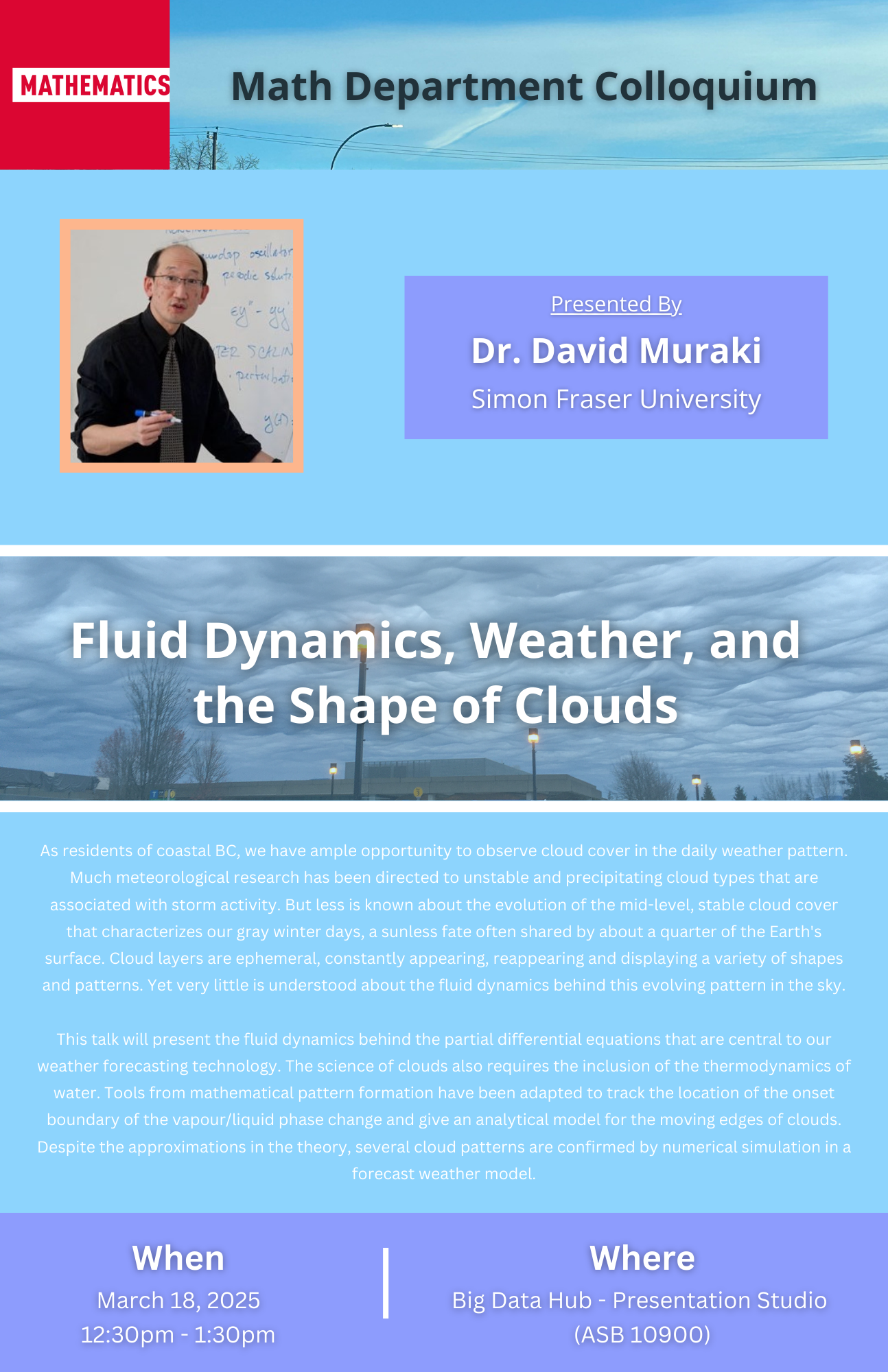- Undergraduate
- Graduate
- Research
- Algebraic and Arithmetic Geometry
- Applied Mathematics
- Computer Algebra
- Discrete Mathematics
- History of Mathematics
- Industrial Mathematics
- Mathematics, Genomics & Prediction in Infection & Evolution - MAGPIE
- Mathematics and Data
- Mathematics of Communications
- Number Theory
- Operations Research
- Centre for Operations Research and Decision Sciences
- PIMS at SFU
- Scientific Computing, Machine Learning and PDE
- People
- Math Internal Resources
- About Us
- Events | Outreach | News
- MATH EDI GROUP
- Grad Internal Resources
- Student Groups
The purpose of the Math Department Colloquium Series is to bring our entire department together as a community to enjoy a lecture on mathematics. Everyone interested in mathematics is welcome to attend.
The organizers for the 2024/2025 academic year are Dr. Katrina Honigs, Dr. Jessica Stockdale, and Dr. Paul Tupper.
Upcoming Colloquium Talks
Dr. David Muraki (Simon Fraser University)
Fluid Dynamics, Weather, and the Shape of Clouds
March 18, 2025
12:30pm - 1:30pm
Big Data Hub – Presentation Studio (ASB 10900)
As residents of coastal BC, we have ample opportunity to observe cloud cover in the daily weather pattern. Much meteorological research has been directed to unstable and precipitating cloud types that are associated with storm activity. But less is known about the evolution of the mid-level, stable cloud cover that characterizes our gray winter days, a sunless fate often shared by about a quarter of the Earth's surface. Cloud layers are ephemeral, constantly appearing, reappearing and displaying a variety of shapes and patterns. Yet very little is understood about the fluid dynamics behind this evolving pattern in the sky.
This talk will present the fluid dynamics behind the partial differential equations that are central to our weather forecasting technology. The science of clouds also requires the inclusion of the thermodynamics of water. Tools from mathematical pattern formation have been adapted to track the location of the onset boundary of the vapour/liquid phase change and give an analytical model for the moving edges of clouds. Despite the approximations in the theory, several cloud patterns are confirmed by numerical simulation in a forecast weather model.



